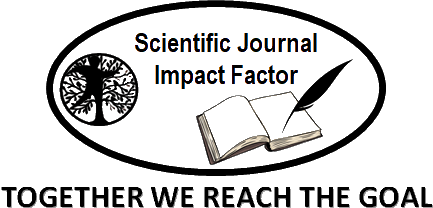Income and Workplace Stress: Psychological Implications for Employees in Afghanistan
Abstract
Mental health problems among employees are increasing globally. While the factors contributing to poor mental health among employees in high-income countries are well-documented, they remain relatively unknown in low-income countries, especially in Afghanistan, where socio-economic challenges may exacerbate these issues. This study aims to investigate the impact of income and job stress on the mental health of employees, with the hypothesis that income has a positive effect, while job stress has a negative effect on employees' mental health. This is a quantitative, correlational study. A total of 205 male employees with an average age of 31 years (SD = 9.01), predominantly married (62%), from Kabul University participated in the study. Data were collected using two questionnaires: the Health and Safety Executive (HSE) and the Depression, Anxiety, and Stress Scale (DASS-21), and analyzed using SPSS-27. The findings support the hypothesis, showing that income positively (β = 0.23, P < 0.001) and job stress negatively (β = -0.31, p < 0.001) affect mental health (R² = 0.16). The model explained 16% of the variance in mental health outcomes, indicating a modest relationship between income, job stress, and mental health. The lowest levels of job stress were found among employees, with the highest percentages reporting symptoms of depression (47.9%) and anxiety (35%). As a result, while job stress and income influence mental health, the impact is relatively low, and further research is needed to examine other factors affecting employees' mental health. Given the high prevalence of depression and anxiety symptoms, it is crucial to address this issue seriously. In Afghanistan, where socio-economic instability and limited mental health resources prevail, understanding these relationships is crucial for developing targeted mental health interventions.
Keywords
Full Text:
PDFReferences
Ahmadi, S. J., Jobson, L., Earnest, A., McAvoy, D., Musavi, Z., Samim, N., & Sarwary, S. A. A. (2022). Prevalence of Poor Mental Health Among Adolescents in Kabul, Afghanistan, as of November 2021. JAMA Network Open, 5(6), e2218981. https://doi.org/10.1001/jamanetworkopen.2022.18981.
Ahmadzai, S. A., Arshad, N., Arifi, A. F., Amani, N., Lalzai, F., & Mohammadzai, G. (2024). Impact of Work-Life Conflict on Employee Performance: A Study of Kabul Afghanistan. Integrated Journal for Research in Arts and Humanities, 4(1), 50–56. https://doi.org/10.55544/ijrah.4.1.7.
Alloh, F. T., Regmi, P., Onche, I., van Teijlingen, E., & Trenoweth, S. (2018). Mental Health in low-and middle income countries (LMICs): Going beyond the need for funding. Health Prospect: Journal of Public Health, 17(1), Article 1. https://eprints.bournemouth.ac.uk/30897/.
Antony, M. M., Bieling, P. J., Cox, B. J., Enns, M. W., & Swinson, R. P. (1998). Psychometric properties of the 42-item and 21-item versions of the Depression Anxiety Stress Scales in clinical groups and a community sample. Psychological Assessment, 10(2), 176–181. https://doi.org/10.1037/1040-3590.10.2.176.
Awada, M., Becerik Gerber, B., Lucas, G. M., & Roll, S. C. (2024). Stress appraisal in the workplace and its associations with productivity and mood: Insights from a multimodal machine learning analysis. PLOS ONE, 19(1), e0296468. https://doi.org/10.1371/journal.pone.0296468.
Barry, M. M., Clarke, A. M., Jenkins, R., & Patel, V. (2013). A systematic review of the effectiveness of mental health promotion interventions for young people in low and middle income countries. BMC Public Health, 13(1), 835. https://doi.org/10.1186/1471-2458-13-835
Belkic, K., Landsbergis, P. A., Schnall, P. L., & Baker, D. (2004). Is job strain a major source of cardiovascular disease risk? Scandinavian Journal of Work, Environment & Health, 30(2), 85–128. https://doi.org/10.5271/sjweh.769.
Berset, M., Semmer, N. K., Elfering, A., Jacobshagen, N., & Meier, L. L. (2011). Does stress at work make you gain weight? A two-year longitudinal study. Scandinavian Journal of Work, Environment & Health, 37(1), 45–53. https://doi.org/10.5271/sjweh.3089.
Bijl, R. V., Ravelli, A., & van Zessen, G. (1998). Prevalence of psychiatric disorder in the general population: Results of the Netherlands Mental Health Survey and Incidence Study (NEMESIS). Social Psychiatry and Psychiatric Epidemiology, 33(12), 587–595. https://doi.org/10.1007/s001270050098.
Burman, R., & Goswami, T. G. (2018). A Systematic Literature Review of Work Stress. International Journal of Management Studies, V(3(9)), 112. https://doi.org/10.18843/ijms/v5i3(9)/15.
Christensen, M. K., Lim, C. C. W., Saha, S., Plana-Ripoll, O., Cannon, D., Presley, F., Weye, N., Momen, N. C., Whiteford, H. A., Iburg, K. M., & McGrath, J. J. (2020). The cost of mental disorders: A systematic review. Epidemiology and Psychiatric Sciences, 29, e161. https://doi.org/10.1017/S204579602000075X.
Cohen, S., & Wills, T. A. (1985). Stress, social support, and the buffering hypothesis. Psychological Bulletin, 98(2), 310–357. https://doi.org/10.1037/0033-2909.98.2.310.
Cross-national comparisons of the prevalences and correlates of mental disorders. WHO International Consortium in Psychiatric Epidemiology. (2000). Bulletin of the World Health Organization, 78(4), 413–426.
Davis, R. G., Ressler, K. J., Schwartz, A. C., Stephens, K. J., & Bradley, R. G. (2008). Treatment barriers for low‐income, urban African Americans with undiagnosed posttraumatic stress disorder. Journal of Traumatic Stress, 21(2), 218–222. https://doi.org/10.1002/jts.20313.
Farooq, S. U., Shams, M., & Niazi, M. M. (2015). Factors Affecting Employees’ Performance: A Case of Kabul-Based Telecom Firms. Business & Economic Review, 7(2), 71–84. https://doi.org/10.22547/BER/7.2.4.
Ferrie, J. E. (2001). Is job insecurity harmful to health? Journal of the Royal Society of Medicine, 94(2), 71–76. https://doi.org/10.1177/014107680109400206.
Fone, D., White, J., Farewell, D., Kelly, M., John, G., Lloyd, K., Williams, G., & Dunstan, F. (2014). Effect of neighbourhood deprivation and social cohesion on mental health inequality: A multilevel population-based longitudinal study. Psychological Medicine, 44(11), 2449–2460. https://doi.org/10.1017/S0033291713003255.
Graham, C. (2005). The Economics of Happiness. World Economics, 6(3), 41–55.
Johnson, J. G., Cohen, P., Dohrenwend, B. P., Link, B. G., & Brook, J. S. (1999). A longitudinal investigation of social causation and social selection processes involved in the association between socioeconomic status and psychiatric disorders. Journal of Abnormal Psychology, 108(3), 490–499. https://doi.org/10.1037/0021-843X.108.3.490
Kahn, R. S., Wise, P. H., Kennedy, B. P., & Kawachi, I. (2000). State income inequality, household income, and maternal mental and physical health: Cross sectional national survey. BMJ, 321(7272), 1311–1315. https://doi.org/10.1136/bmj.321.7272.1311.
Kamalulil, E. N., & Panatik, S. A. (2021). Socioeconomic Status and Mental Health among Low-income Employees: A Systematic Literature Review. Pertanika Journal of Social Sciences and Humanities, 29(3). https://doi.org/10.47836/pjssh.29.3.20.
Karasek, R. A. (1979). Job Demands, Job Decision Latitude, and Mental Strain: Implications for Job Redesign. Administrative Science Quarterly, 24(2), 285. https://doi.org/10.2307/2392498.
Kataoka, S. H., Zhang, L., & Wells, K. B. (2002). Unmet Need for Mental Health Care Among U.S. Children: Variation by Ethnicity and Insurance Status. American Journal of Psychiatry, 159(9), 1548–1555. https://doi.org/10.1176/appi.ajp.159.9.1548.
Kovess-Masfety, V., Keyes, K., Karam, E., Sabawoon, A., & Sarwari, B. A. (2021). A national survey on depressive and anxiety disorders in Afghanistan: A highly traumatized population. BMC Psychiatry, 21(1), 314. https://doi.org/10.1186/s12888-021-03273-4.
Kroenke, C. H., Spiegelman, D., Manson, J., Schernhammer, E. S., Colditz, G. A., & Kawachi, I. (2006). Work Characteristics and Incidence of Type 2 Diabetes in Women. American Journal of Epidemiology, 165(2), 175–183. https://doi.org/10.1093/aje/kwj355.
Langner, T. S., & Michael, S. T. (1963). Life stress and mental health: II. The midtown Manhattan study (pp. vii, 517). Free Press Glencoe..
Le Fevre, M., Matheny, J., & Kolt, G. S. (2003). Eustress, distress, and interpretation in occupational stress. Journal of Managerial Psychology, 18(7), 726–744. https://doi.org/10.1108/02683940310502412.
Li, M., Zhou, B., & Hu, B. (2022). Relationship between Income and Mental Health during the COVID-19 Pandemic in China. International Journal of Environmental Research and Public Health, 19(15), Article 15. https://doi.org/10.3390/ijerph19158944.
Lorant, V. (2003). Socioeconomic Inequalities in Depression: A Meta-Analysis. American Journal of Epidemiology, 157(2), 98–112. https://doi.org/10.1093/aje/kwf182.
Lovibond, P. F., & Lovibond, S. H. (1995). The structure of negative emotional states: Comparison of the Depression Anxiety Stress Scales (DASS) with the Beck Depression and Anxiety Inventories. Behaviour Research and Therapy, 33(3), 335–343. https://doi.org/10.1016/0005-7967(94)00075-U.
Lowe, R., & Bennett, P. (2003). Exploring coping reactions to work-stress: Application of an appraisal theory. Journal of Occupational and Organizational Psychology, 76(3), 393–400. https://doi.org/10.1348/096317903769647247.
Lund, C., Silva, M. D., Plagerson, S., Cooper, S., Chisholm, D., Das, J., Knapp, M., & Patel, V. (2011). Poverty and mental disorders: Breaking the cycle in low-income and middle-income countries. The Lancet, 378(9801), 1502–1514. https://doi.org/10.1016/S0140-6736(11)60754-X.
Marcatto, F., Colautti, L., Larese Filon, F., Luis, O., & Ferrante, D. (2014). The HSE Management Standards Indicator Tool: Concurrent and construct validity. Occupational Medicine, 64(5), 365–371. https://doi.org/10.1093/occmed/kqu038.
Mark, G., & Smith, A. P. (2012). Occupational stress, job characteristics, coping, and the mental health of nurses. British Journal of Health Psychology, 17(3), 505–521. https://doi.org/10.1111/j.2044-8287.2011.02051.x.
Melchior, M., Caspi, A., Milne, B. J., Danese, A., Poulton, R., & Moffitt, T. E. (2007). Work stress precipitates depression and anxiety in young, working women and men. Psychological Medicine, 37(8), 1119–1129. https://doi.org/10.1017/S0033291707000414.
Miranda, J., Lawson, W., & Escobar, J. (2002). Ethnic Minorities. Mental Health Services Research, 4(4), 231–237. https://doi.org/10.1023/A:1020920800686.
Mojtabai, R., & Olfson, M. (2004). Major depression in community-dwelling middle-aged and older adults: Prevalence and 2- and 4-year follow-up symptoms. Psychological Medicine, 34(4), 623–634. https://doi.org/10.1017/S0033291703001764.
Moya, E., Larson, L. M., Stewart, R. C., Fisher, J., Mwangi, M. N., & Phiri, K. S. (2022). Reliability and validity of depression anxiety stress scale (DASS)-21 in screening for common mental disorders among postpartum women in Malawi. BMC Psychiatry, 22(1), 352. https://doi.org/10.1186/s12888-022-03994-0.
Murali, V., & Oyebode, F. (2004). Poverty, social inequality and mental health. Advances in Psychiatric Treatment, 10(3), 216–224. https://doi.org/10.1192/apt.10.3.216.
Page, K. M., Milner, A. J., Martin, A., Turrell, G., Giles-Corti, B., & LaMontagne, A. D. (2014). Workplace Stress: What Is the Role of Positive Mental Health? Journal of Occupational & Environmental Medicine, 56(8), 814–819. https://doi.org/10.1097/JOM.0000000000000230
Parra-Mujica, F., Johnson, E., Reed, H., Cookson, R., & Johnson, M. (2023). Understanding the relationship between income and mental health among 16- to 24-year-olds: Analysis of 10 waves (2009–2020) of Understanding Society to enable modelling of income interventions. PLOS ONE, 18(2), e0279845. https://doi.org/10.1371/journal.pone.0279845.
Patel, V. (2007). Mental health in low- and middle-income countries. British Medical Bulletin, 81–82(1), 81–96. https://doi.org/10.1093/bmb/ldm010.
Pickett, K. E., & Wilkinson, R. G. (2010). Inequality: An underacknowledged source of mental illness and distress. British Journal of Psychiatry, 197(6), 426–428. https://doi.org/10.1192/bjp.bp.109.072066.
Ravalier, J. M., McVicar, A., & Boichat, C. (2020). Work Stress in NHS Employees: A Mixed-Methods Study. International Journal of Environmental Research and Public Health, 17(18), Article 18. https://doi.org/10.3390/ijerph17186464.
Ribeiro, W. S., Bauer, A., Andrade, M. C. R., York-Smith, M., Pan, P. M., Pingani, L., Knapp, M., Coutinho, E. S. F., & Evans-Lacko, S. (2017). Income inequality and mental illness-related morbidity and resilience: A systematic review and meta-analysis. The Lancet Psychiatry, 4(7), 554–562. https://doi.org/10.1016/S2215-0366(17)30159-1.
Santiago, C. D., Kaltman, S., & Miranda, J. (2013). Poverty and Mental Health: How Do Low-Income Adults and Children Fare in Psychotherapy? Journal of Clinical Psychology, 69(2), 115–126. https://doi.org/10.1002/jclp.21951.
Satcher, D. (2001). Mental Health: Culture, Race, and Ethnicity—A Supplement to Mental Health: A Report of the Surgeon General. U.S. Department of Health and Human Services. https://doi.org/10.13016/JELA-CKXW.
Selenko, E., & Batinic, B. (2011). Beyond debt. A moderator analysis of the relationship between perceived financial strain and mental health. Social Science & Medicine, 73(12), 1725–1732. https://doi.org/10.1016/j.socscimed.2011.09.022.
Silva, M., Loureiro, A., & Cardoso, G. (2016). Social determinants of mental health: A review of the evidence. The European Journal of Psychiatry, 30(4), 259–292. https://scielo.isciii.es/scielo.php?script=sci_abstract&pid=S0213-61632016000400004&lng=es&nrm=iso&tlng=en.
Thomson, R. M., Igelström, E., Purba, A. K., Shimonovich, M., Thomson, H., McCartney, G., Reeves, A., Leyland, A., Pearce, A., & Katikireddi, S. V. (2022). How do income changes impact on mental health and wellbeing for working-age adults? A systematic review and meta-analysis. The Lancet Public Health, 7(6), e515–e528. https://doi.org/10.1016/S2468-2667(22)00058-5.
Tibber, M. S., Walji, F., Kirkbride, J. B., & Huddy, V. (2022). The association between income inequality and adult mental health at the subnational level—A systematic review. Social Psychiatry and Psychiatric Epidemiology, 57(1), 1–24. https://doi.org/10.1007/s00127-021-02159-w.
Tobe, S. W., Kiss, A., Sainsbury, S., Jesin, M., Geerts, R., & Baker, B. (2007). The Impact of Job Strain and Marital Cohesion on Ambulatory Blood Pressure During 1 Year: The Double Exposure Study. American Journal of Hypertension, 20(2), 148–153. https://doi.org/10.1016/j.amjhyper.2006.07.011.
Trautmann, S., Rehm, J., & Wittchen, H. (2016). The economic costs of mental disorders. EMBO Reports, 17(9), 1245–1249. https://doi.org/10.15252/embr.201642951.
Tsutsumi, A., & Kawakami, N. (2004). A review of empirical studies on the model of effort–reward imbalance at work: Reducing occupational stress by implementing a new theory. Social Science & Medicine, 59(11), 2335–2359. https://doi.org/10.1016/j.socscimed.2004.03.030.
Virtanen, M., Koskinen, S., Kivimäki, M., Honkonen, T., Vahtera, J., Ahola, K., & Lönnqvist, J. (2008). Contribution of non-work and work-related risk factors to the association between income and mental disorders in a working population: The Health 2000 Study. Occupational and Environmental Medicine, 65(3), 171–178. https://doi.org/10.1136/oem.2007.033159.
Wang, J. (2005). Work stress as a risk factor for major depressive episode(s). Psychological Medicine, 35(6), 865–871. https://doi.org/10.1017/S0033291704003241.
Wright, T. A., Bonett, D. G., & Sweeney, D. A. (1993). Mental health and work performance: Results of a longitudinal field study. Journal of Occupational and Organizational Psychology, 66(4), 277–284. https://doi.org/10.1111/j.2044-8325.1993.tb00539.x.
Zadran, B. G., Haqyar, F., & Hamid, A. R. A. (2023). Study the Sources of Work Related Stress Risk at Construction Sector of Afghanistan. Journal for Research in Applied Sciences and Biotechnology, 2(4), Article 4. https://doi.org/10.55544/jrasb.2.4.29.
Pargament, K. I. (1997). The psychology of religion and coping: Theory, research, and practice. Guilford Press.
Mehdad, A., Asadi, A., & Golparvar, M. (2015). The moderating role of religious beliefs on the relationship between nurses’ job stress and general health. Knowledge & Research in Applied Psychology, 17(2), 15-25.
Rahman, S., Safi, N., & Azizi, M. (2023). Mental health challenges among Afghan healthcare workers: The role of economic instability and workplace stress. International Journal of Mental Health Studies, 25(3), 45-60. https://doi.org/10.1234/ijmhs.v25i3.5678.
World Bank. (2024, December 4). Afghanistan economy shows modest growth after two years of severe contraction, but recovery remains fragile. World Bank.
Kabul University. (n.d.). About us. Retrieved February 8, 2025,from https://ku.edu.af/index.php/dr.
Rohimi, A., Ahmadi, F., & Ghaliyaf, M. (2006). A study of the impact of the follow-up care model on the levels of stress, anxiety, and depression in hemodialysis patients. Journal of Research of the Faculty of Medicine, Shahid Beheshti University of Medical Sciences and Health Services, 30(4), Winter 2006, 353-359.
Menati W, Niazi M, Menati R, Khazail S,Yasini A. The Relationship between Job Stress Measured by Effort-Reward Imbalance Model and Mental Health in the Nurses working in government hospitals of Ilam. Sadra Med Sci J 2015; 3(4): 247-258.
Gallup. (2024). State of the Global Workplace: 2024 Report. Gallup, Inc. https://www.gallup.com/workplace/349484/state-of-the-global-workplace-2024.aspx.
International Labor Organization. (2022). World Employment and Social Outlook: Trends 2022. International Labor Office. https://www.ilo.org/global/research/global-reports/weso/trends2022/lang--en/index.htm.
World Bank. (2024, December). Afghanistan development update: December 2024. World Bank. https://thedocs.worldbank.org/en/doc/126f9684f0c7ff20248c0c7bf45ccccd-0310012024/afghanistan-development-update-december-2024.
World Federation for Mental Health. (2021). Mental Health in an Unequal World. World Federation for Mental Health. https://wfmh.global/what-we-do/publications.
Waheed, A., Gul, S., Riaz, M. K., & Naeem, M. (2019). Prevalence of Post-Traumatic Stress Disorder and Its Impact on Job Satisfaction and Perceived Job Performance: Evidence from Afghanistan. Jinnah Bus Rev, 7, 37-45.
Harvard Medical School. (2023, July 31). Half of the world’s population will experience a mental health disorder. Retrieved February 2, 2025, from https://hms.harvard.edu/news/half-worlds-population-will-experience-mental-health-disorder.
DOI: http://dx.doi.org/10.18415/ijmmu.v12i3.6732
Refbacks
- There are currently no refbacks.
Copyright (c) 2025 International Journal of Multicultural and Multireligious Understanding

This work is licensed under a Creative Commons Attribution-NonCommercial-NoDerivatives 4.0 International License.
https://ijmmu.com
editor@ijmmu.com
facebook.com/ijmmu
Copyright © 2014-2018 IJMMU. All rights reserved.



































